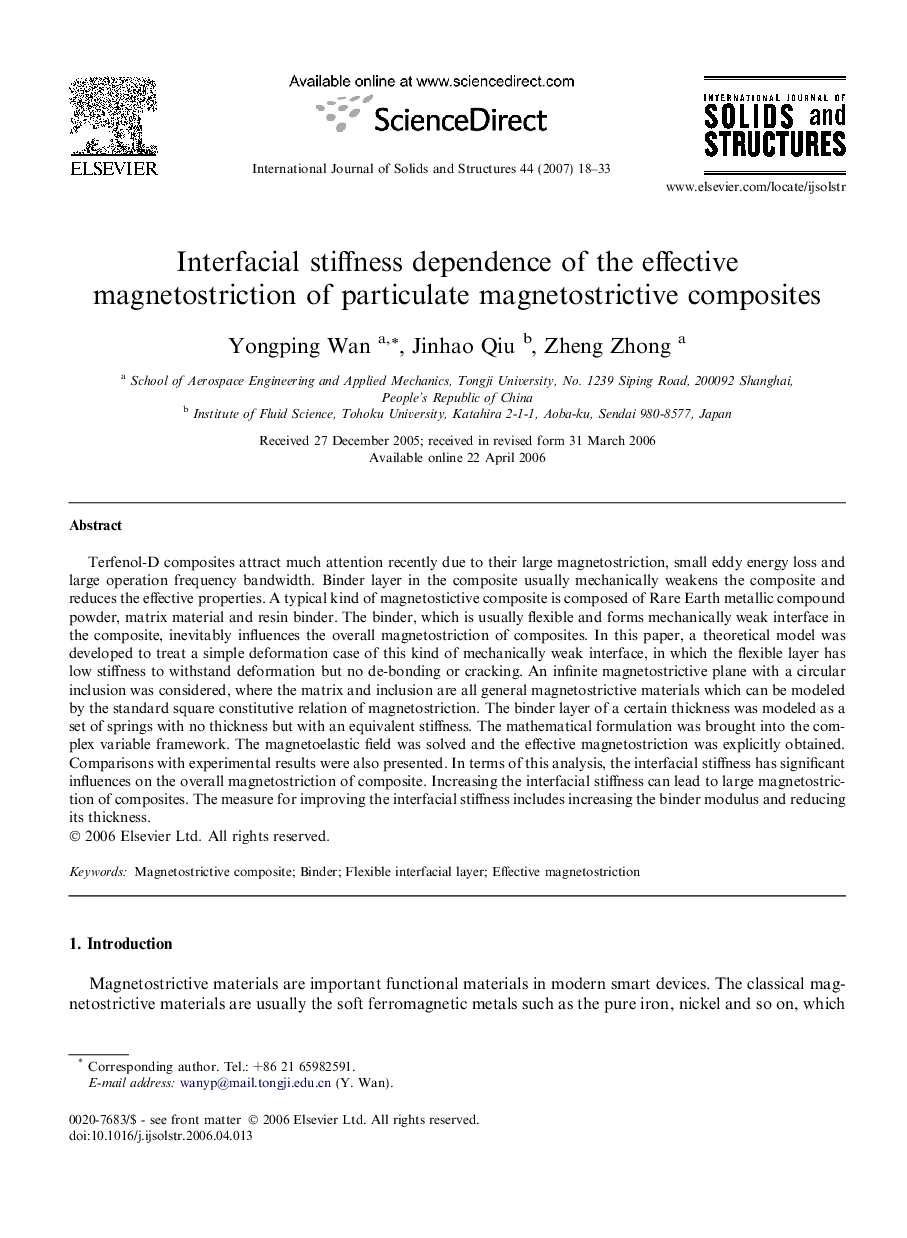| Article ID | Journal | Published Year | Pages | File Type |
|---|---|---|---|---|
| 280363 | International Journal of Solids and Structures | 2007 | 16 Pages |
Terfenol-D composites attract much attention recently due to their large magnetostriction, small eddy energy loss and large operation frequency bandwidth. Binder layer in the composite usually mechanically weakens the composite and reduces the effective properties. A typical kind of magnetostictive composite is composed of Rare Earth metallic compound powder, matrix material and resin binder. The binder, which is usually flexible and forms mechanically weak interface in the composite, inevitably influences the overall magnetostriction of composites. In this paper, a theoretical model was developed to treat a simple deformation case of this kind of mechanically weak interface, in which the flexible layer has low stiffness to withstand deformation but no de-bonding or cracking. An infinite magnetostrictive plane with a circular inclusion was considered, where the matrix and inclusion are all general magnetostrictive materials which can be modeled by the standard square constitutive relation of magnetostriction. The binder layer of a certain thickness was modeled as a set of springs with no thickness but with an equivalent stiffness. The mathematical formulation was brought into the complex variable framework. The magnetoelastic field was solved and the effective magnetostriction was explicitly obtained. Comparisons with experimental results were also presented. In terms of this analysis, the interfacial stiffness has significant influences on the overall magnetostriction of composite. Increasing the interfacial stiffness can lead to large magnetostriction of composites. The measure for improving the interfacial stiffness includes increasing the binder modulus and reducing its thickness.
